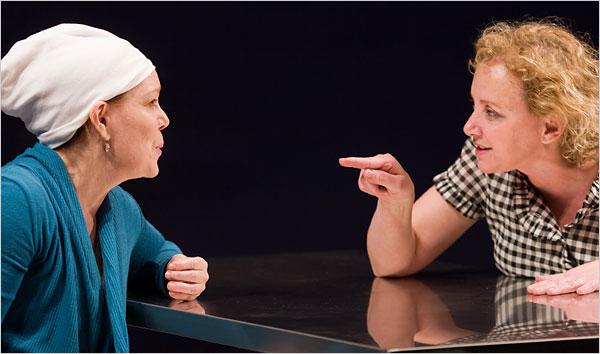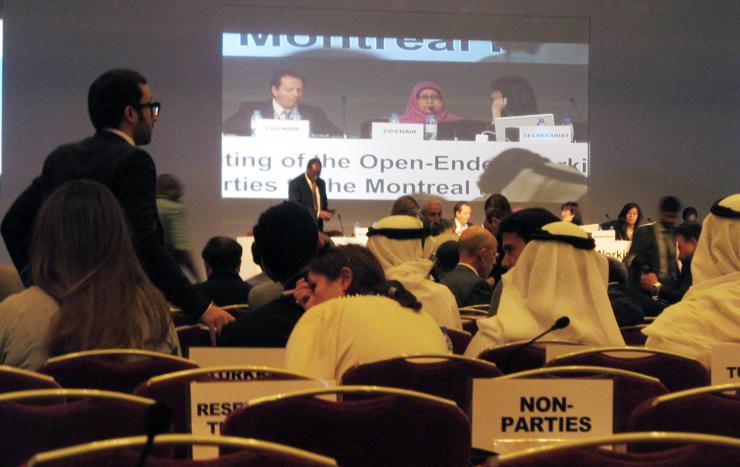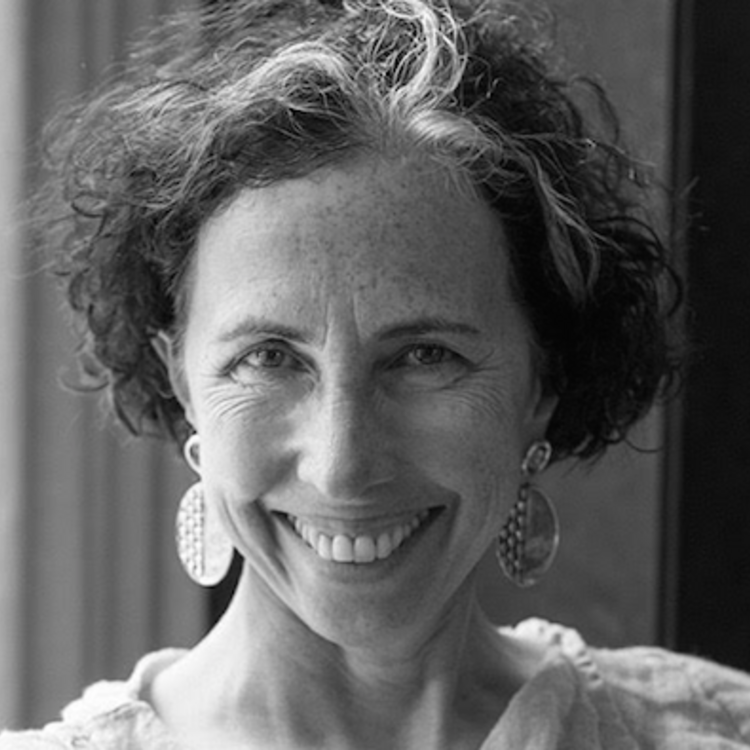Pondering the Art and Science of Writing Non-fiction Plays
My most produced play is based on lived experience—my sister’s diagnosis and subsequent death from breast cancer, and my coinciding emergence as a writer. And I’ve spent time working on a Watergate musical. More recently, I was challenged by one of the architects of the Montreal Protocol, the most successful climate change agreement, to write a play about this achievement. Doing this work now is what prompted me to propose this blog in hopes of starting a conversation with other writers engaged in Non-fiction Theatre.
Six months after my sister’s death, I was awoken in the middle of the night with the need to capture what it was like to enter the whirlwind of treatment options, doctors, hospitals, confusion, and terrifying decisions. Cancer is like a farce where there is a new person behind every door mostly telling you really scary things. The form of the play came to me quickly. There would be the sisters and two other actors to play the other thirty-eight people (by final draft). Much of the dialogue came directly from my memory; there was much seared in my mind from those exigent days.
In both of my plays, I found I needed many characters. In Looking for the Pony, I restricted myself to four actors. For World Avoided, I have attended meetings with 400 participants, and the more I wrote, the more characters I needed to introduce.

In the first production, J. Smith Cameron played me and Deirdre O’Connell played my sister. From early on in rehearsal, J. Smith and I felt a kinship. She wanted my shoes. I had a pair of Doc Marten Mary Janes, but we didn’t have the same shoe size. We worked hard to find a similar pair. In production, people who knew me were struck by her authentic portrayal. To discover my sister, Didi asked questions and I told stories, but we were in agreement she was for Didi to find. With her fierce instrument, Didi created a unique remarkable woman. Their partners were the versatile and hysterical Debargo Sanyal and Lori Funk. J. Smith had an instinct at the end of the play that she needed to release the audience even as she, the character, was living on in grief. In collaboration, we found the right final moment for the play.
My current experience is quite different. Essentially the lead character challenged me to write the play. He told me stories, gave me books and introduced me to other participants. At the outset, he and I both anticipated the play would be a celebration of the effort to save the ozone layer. There was so much success I was concerned where I would find conflict. Then, Steve invited me to a meeting of the Parties to the Protocol. Fortunately around this time, I received a Sloan/EST commission. It was at my first meeting that I found the conflict and the natural form of the play. In the present, the parties were arguing ferociously about an important next step for climate. All decisions are by consensus, so any argument has to be argued out to its conclusion. I went on to attend four meetings getting to know most of the people I am portraying. By now, many have become friends. This intimacy made the writing both easier and more difficult.

The hardest part was I wanted to give everyone his or her due; the ozone effort has many heroes. I had to remind myself to stay focused on the story. I started to write and also to read. In the midst of an early draft, I had the great pleasure of seeing All the Way and went on to read it. There were many good lessons in this text from the streamlined staging, the way we flip from inside the White House to inside the civil rights movement and the detail of Johnson’s speech. I particularly took note of how to portray a marriage in spare scenes rooted in strong character development, so that we understand why the two people are together. I also looked back at Democracy, another political play that I had seen years before. In both cases, the storytelling was anchored in the important relationships in the play. While I knew I had hundreds of characters, I needed to figure out who was most important to the main character and how that relationship was changed by the action of the play.
In both of my plays, I found I needed many characters. In Looking for the Pony, I restricted myself to four actors. For World Avoided, I have attended meetings with 400 participants, and the more I wrote, the more characters I needed to introduce. In the current draft, ten actors play sixty-six speaking and many more nonspeaking parts. From Hamilton—I could write 1,000 words on Hamilton—I learned to take care of minor characters. Lin-Manuel is particularly skilled where it is likely there is little known about a historical person. I am thinking of the darling third sister Peggy Schuyler and the mistress Maria Reynolds.
I’ll conclude I’ve learned:
- Tell the truth.
- Be intimate with the characters and allow the audience to become intimate.
- Write a scene that didn’t happen to make something clear to the audience or to fill a gap. Life may or may not provide us all of the required dramatic beats. Our imaginations can fill in.
- Similarly, if someone needs to take an action that none of the real people did, make up a fictional character to do it.
- Pay attention to the smallest character. Give them their due.
- Use delicious details to bring us into the unique world.
- If some aspect is relentless—such as political debating—find ways to vary the rhythm to keep the audience’s ear fresh.
- Make the setting come alive. Great example from All the Way, LBJ’s desk is center stage the whole play, and is moved to the side to make space to bury the three murdered voting rights activists.
- Cut out the boring parts.
- Draft, schmaft. Keep writing till you got it.
To find the drama inside actual events, find the right order and the right amount of fictionalizing to build a dramatic arc.


Comments
The article is just the start of the conversation—we want to know what you think about this subject, too! HowlRound is a space for knowledge-sharing, and we welcome spirited, thoughtful, and on-topic dialogue. Find our full comments policy here